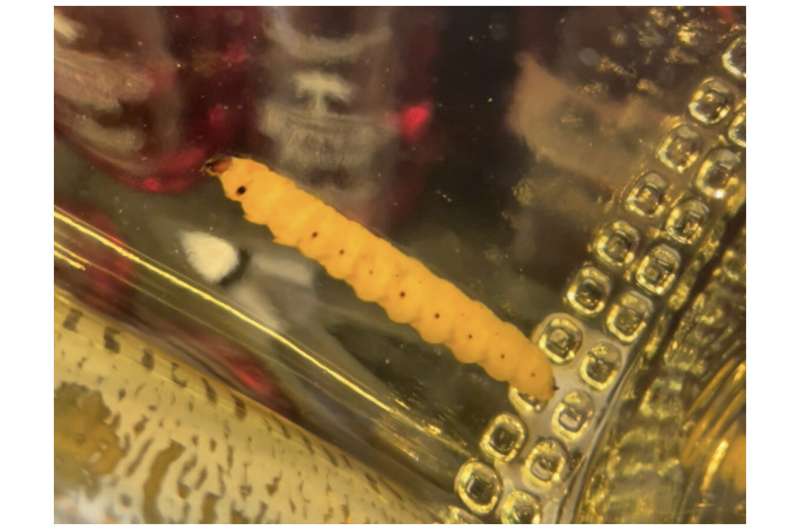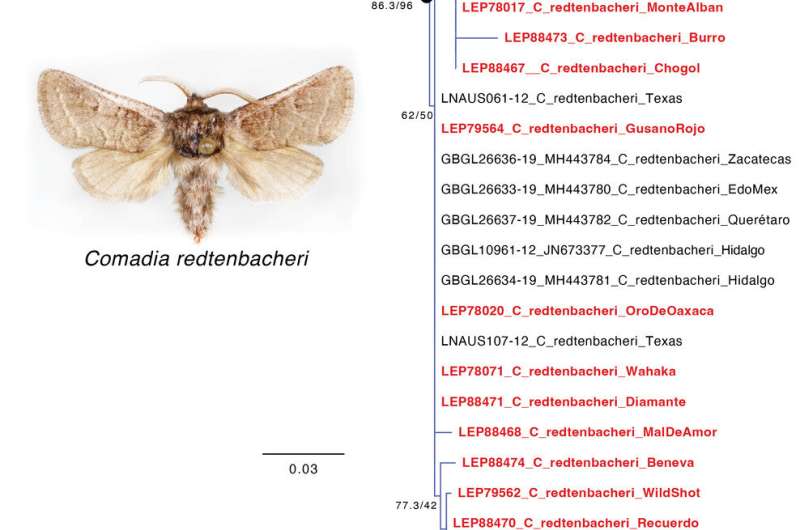This article has been reviewed according to Science X's editorial process and policies. Editors have highlighted the following attributes while ensuring the content's credibility:
fact-checked
peer-reviewed publication
trusted source
proofread
Mezcal worm in a bottle: DNA evidence suggests it is a single moth species

A new study published in the journal PeerJ looked to identify the species of larva found in bottles of Mezcal. Mezcal is a distilled alcoholic beverage made from any type of agave.
Are people consuming larvae of the skipper butterfly Aegiale hesperiaris, or the larva of the moth Comadia redtenbacheri, the latter of which is thought to be declining in numbers in recent years? Or is the worm the larva of a weevil, or another unidentified insect species? Researchers used DNA-based identification analysis of larvae inside 21 commercially available mezcals to determine their identity.
Specimens were obtained from mezcal bottles that were purchased between 2018 and 2022. All larvae appeared superficially very similar, with a distinct head capsule and prolegs that are characteristic of lepidopteran larvae. Some specimens were white, others were pinkish red. Of the 21 larvae subjected to DNA extraction, 18 yielded DNA sequences that were suitable for analysis.
The results were somewhat unexpected. Historically there are about 63 species of larvae or "worms" that are consumed in Mexico, including the Tequila giant skipper (A. hesperiaris) which, given its name, implies that it is included in tequila and other mezcals.

The study found that all larvae are a single moth species affirming the importance of C. redtenbacheri for the mezcal industry. Larvae of C. redtenbacheri are one of the most popular edible insects in Mexico.
Adding larvae to Mexican beverages and foods (salts, garnishes, powders, etc.) is driven by health benefits and by beliefs that these larvae contain aphrodisiac properties (Contreras-Frias, 2013). This trend is resulting in greater demand that is applying pressure to local larval populations.
In response to the declining number of mezcal larvae, researchers have begun to develop methods to cultivate these larvae in captivity.
More information: Akito Y. Kawahara et al, Mezcal worm in a bottle: DNA evidence suggests a single moth species, PeerJ (2023). DOI: 10.7717/peerj.14948
Journal information: PeerJ
Provided by PeerJ




















